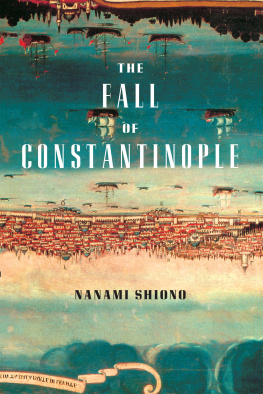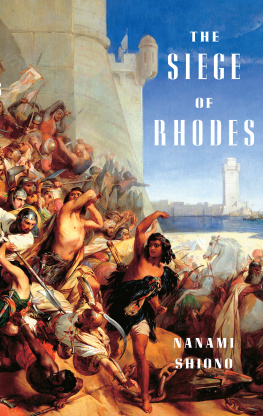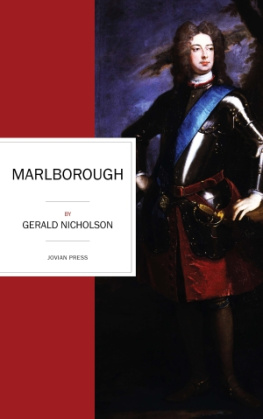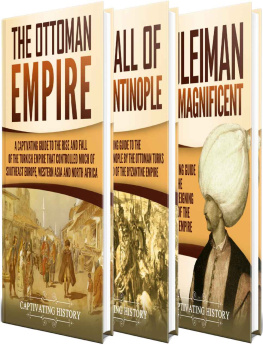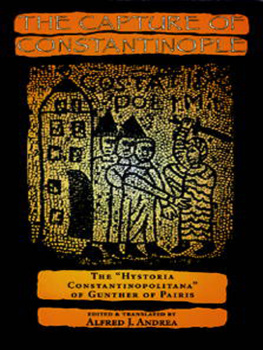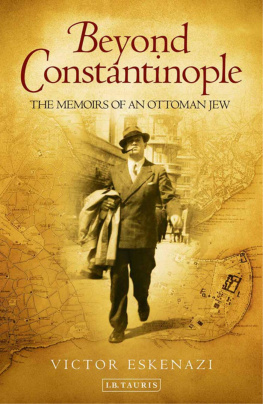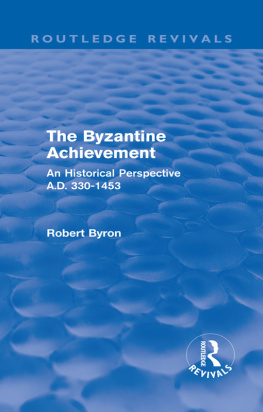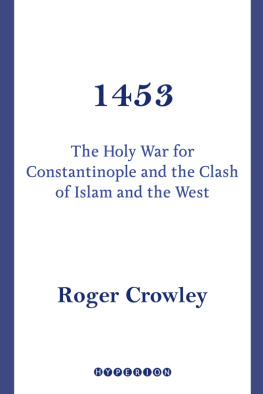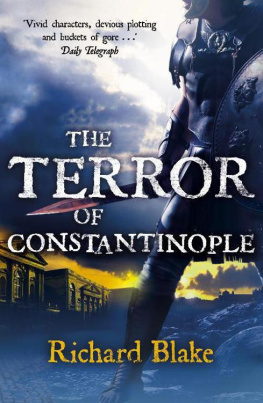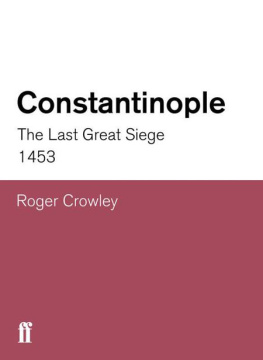Nanami Shiono - The Fall of Constantinople
Here you can read online Nanami Shiono - The Fall of Constantinople full text of the book (entire story) in english for free. Download pdf and epub, get meaning, cover and reviews about this ebook. year: 2020, publisher: Kodansha USA, genre: Detective and thriller. Description of the work, (preface) as well as reviews are available. Best literature library LitArk.com created for fans of good reading and offers a wide selection of genres:
Romance novel
Science fiction
Adventure
Detective
Science
History
Home and family
Prose
Art
Politics
Computer
Non-fiction
Religion
Business
Children
Humor
Choose a favorite category and find really read worthwhile books. Enjoy immersion in the world of imagination, feel the emotions of the characters or learn something new for yourself, make an fascinating discovery.
- Book:The Fall of Constantinople
- Author:
- Publisher:Kodansha USA
- Genre:
- Year:2020
- Rating:5 / 5
- Favourites:Add to favourites
- Your mark:
- 100
- 1
- 2
- 3
- 4
- 5
The Fall of Constantinople: summary, description and annotation
We offer to read an annotation, description, summary or preface (depends on what the author of the book "The Fall of Constantinople" wrote himself). If you haven't found the necessary information about the book — write in the comments, we will try to find it.
The Fall of Constantinople — read online for free the complete book (whole text) full work
Below is the text of the book, divided by pages. System saving the place of the last page read, allows you to conveniently read the book "The Fall of Constantinople" online for free, without having to search again every time where you left off. Put a bookmark, and you can go to the page where you finished reading at any time.
Font size:
Interval:
Bookmark:
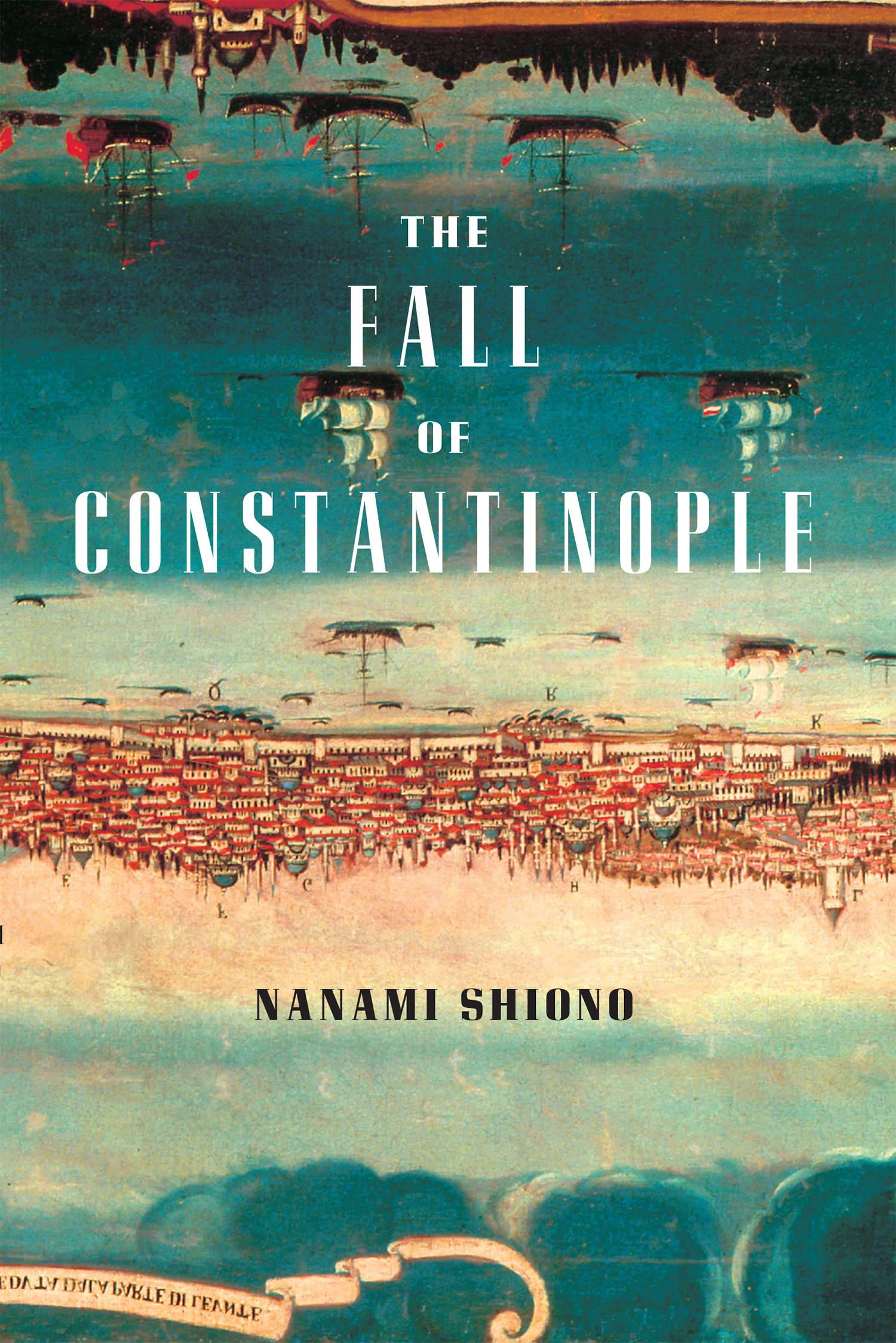
Reading Nanami Shionos historical tales is like uncovering brilliant stories in an ancient scroll.
Gendai Weekly
She is second to none in writing men.
Bunshun Magazine
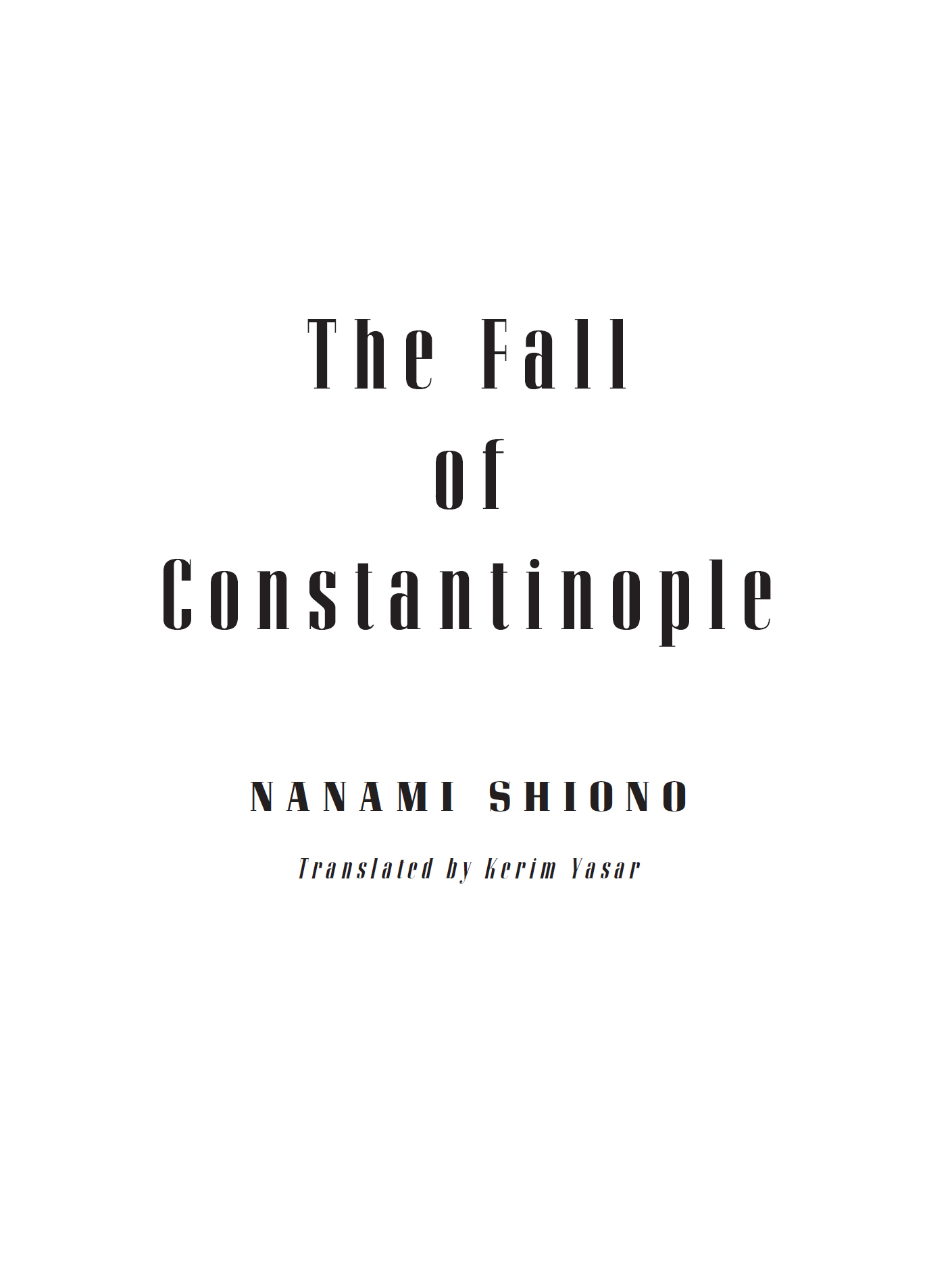
Copyright 2005 by Nanami Shiono
All rights reserved.
Published by Vertical, an imprint of Kodansha USA Publishing, LLC., 2020
Originally published in Japanese as Konstantinopuru no Kanraku by Shinchosha, Tokyo, 1972.
Ebook ISBN9781949980943
First Edition
Kodansha USA Publishing, LLC.
451 Park Avenue South, 7th Floor
New York, NY 10016
www.readvertical.com
a_prh_5.5.0_c0_r0
CONSTANTINE XI | Byzantine (Eastern Roman) Emperor |
DIEDO | Venetian sea captain |
GEORGIOS | Learned monk of Constantinople |
GIUSTINIANI | Genoese mercenary captain |
HALIL | Grand Vizier of Ottoman Turkey |
ISIDORE | Catholic Cardinal and Papal envoy |
JULIA | Spanish consul of Constantinople |
LOMELLINO | Magistrate of the Genoese settlement |
MEHMED II | Sultan of Ottoman Turkey |
MIHAJLOVIC | Serbian cavalry captain |
MINOTTO | Venetian ambassador to Constantinople |
NICOLO | Venetian noble and physician |
NOTARAS | Chief Minister of the Byzantine Empire |
ORHAN | Turkish prince in exile |
PHRANTZES | Minister of the Byzantine Empire |
TEDALDI | Florentine merchant |
TREVISAN | Venetian admiral |
TURSUN | Sultans page |
UBERTINO | Philosophy student from northern Italy |
URBAN | Hungarian military engineer |
ZAGANOS | Turkish Pasha |
It is not unusual, in the annals of history, for the fall of a city to be bound up with the destruction of a nation. Yet how many times in the long history of the human race has the fall of a city heralded the end of an entire civilization, and one that had exerted a significant influence on the surrounding world over the course of many centuries? Furthermore, how many such occurrences can be pinpointed not only to the exact year, but to the exact month, day, even hour? Constantinople is unusual because we know with certainty not only the day of its death, but the day of its birth as well.
This city on the Bosphorus Strait was known as Byzantium until May 11th, 330 C.E., when it took the name Constantinopolis (The City of Constantine) in honor of its founder, the Emperor Constantine. For 1,123 years it served as the capital of the Greek-speaking Roman Empire, also known as the Eastern Roman Empire or the Byzantine Empire.
In these pages we will use the anglicized name Constantinople. This is fitting in a sense because during the millennium or so of its flourishing, the city was known by a number of names other than the Constantinopolis used in Greek and Latin. Every ethnic group that had any connection with the city pronounced the name in its own way. The Italians, for example, who had a very close relationship with the city during its final years, called it Constantinopoli. The current official name of the city, Istanbul, is the Turkish variation on Constantinopolis, but one so altered by the passage of time that its etymology is difficult if not impossible to guess.
Similarly, Adrianopolis is known in modern Turkish as Edirne. When Constantinople fell, however, Adrianopolis (The City of Emperor Hadrian) had already been the Ottoman capital for over a hundred years, so referring to it here by its Greek or Latin name would not be quite appropriate. At the same time, though, since not even the Turks of the time had yet begun to call the city Edirne, for the sake of consistency let us refer to it by the rendition that would be most congenial for us, Adrianople.
The rapid development of Constantinople, also called New Rome, was quite enough to draw the attention of the neighboring peoples of the time, all the more so because the Western Roman Empire was in decline. Situated where Europe meets Asia, the city was destined from birth to become the capital of the Mediterranean world.
This New Rome, however, was completely different from the Rome to the west in one important way. Eastern Rome was an empire born with Christianity as its defining constituent. The cloak worn in public by the emperor of the Eastern Roman Empire was not purple, but crimson. The Christian church had made purple, which had been the color of the ancient Roman emperors, the color of mourningin other words, the color of death.
Although it is said that when Eastern Rome was founded in the fourth century it was already a more vibrant society than western Rome, in the final analysis it didnt actually become the capital of the Mediterranean world until the original Rome met its ruin in the late fifth century. Less than a century after that, in the mid-sixth century, the Eastern Roman Empires sphere of influence reached its greatest extent. Although it didnt match the ancient Roman Empire at its zenith, the Byzantine Empire under Emperor Justinian extended from the Straits of Gibraltar in the west to Persia in the east, from the Italian Alps in the north to the upper Nile in the south. (Map 1)
By the time the Crusades began in the 11th century, however, the empire had diminished considerably. The Byzantine Empire had become the base of the Greek Orthodox Church, whose doctrinal disputes with the Catholic Church had led to schism, and so its allegiances during this period of conflict between the Christian powers of the West and the Islamic forces in the East were not completely clear. It was during this time, as well, that the Byzantines lost control of the eastern Mediterranean Sea to the maritime city-states of Genoa and Venice. (Map 2) With such a state of affairs, it was only a matter of time before the empire was lost. The final push came with the Fourth Crusade in 1204, which also saw the founding of the Latin Empire. During this period only the Nicaean Empire, which had been founded in Asia Minor by exiles fled from Constantinople, kept the bloodlines of the Eastern Roman Empire alive.
The Byzantines were able to regain Constantinople after a mere sixty years, but to their great misfortune an archrival to the east continued to grow in size and strength in the meantime: the Ottoman Turks, who were consolidating their strength in the Anatolian plain. For the next century the Byzantines suffered a string of defeats. It is the guiding principle of history that all that prospers must eventually decline, but even so, the debilitation of the Byzantine Empire was notably precipitous. (Maps 3 and 4)
As the Turks crossed the Bosphorus Strait and conquered one European holding after another, the once-glorious Byzantine Empire was reduced to nothing more than Constantinople, its environs, and a portion of the Peloponnese peninsula. The Aegean Sea to the south was firmly in the grip of the maritime city-states of Venice and Genoa, each of which had a population of no more than 200,000.
Font size:
Interval:
Bookmark:
Similar books «The Fall of Constantinople»
Look at similar books to The Fall of Constantinople. We have selected literature similar in name and meaning in the hope of providing readers with more options to find new, interesting, not yet read works.
Discussion, reviews of the book The Fall of Constantinople and just readers' own opinions. Leave your comments, write what you think about the work, its meaning or the main characters. Specify what exactly you liked and what you didn't like, and why you think so.

